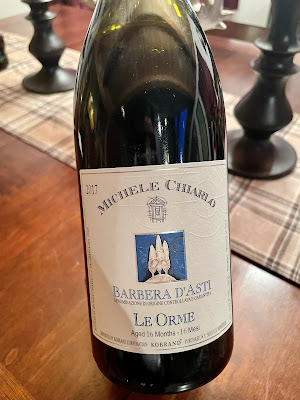As we round out these last couple weeks of November, this week I'm focusing on the Piedmont wine region and one of its great white grapes, Cortese, specifically the wines produced from the Gavi area. You can find this area located in the southeastern corner of Piedmont where Piedmont merges with the region of Liguria within the provinces of Monferrato and Alessandria. The landscape of this area not only has hills and valleys with the Ligurian Apennines nearby, but it’s only about 30 miles north of Genoa with the Ligurian Sea influences.
Wines have shown up in documents within the area of Gavi since 972 AD, but this region had historically been based on red wines. By the 17th century documentation shows that the vineyards had completely converted over to the Cortese grape. After phylloxera had hit the area, producers chose to replant their vineyards with the Cortese grape over the Dolcetto grape. Much success and attention was drawn to the Cortese grape driven by the producer La Scolca.
In 1974 Gavi earned the DOC certification. In the 80’s Cortese’s quality declined due to its high yields and production of neutral, acidic wines. Into the 90’s Cortese’s quality recovered earning the Gavi DOCG certification in 1998. The Gavi DOCG wines hail from 11 communes within the Alessandria province produced from 100% Cortese. You may also see the wines labeled as Gavi di Gavi and those are wines that come specifically come from the Gavi commune.
Legend has it that these wines were named after Princess Gavia. In 528 she fled the wrath of her father, Clodomiro the King of France, due to her love for a young page that he disapproved of. She fled to the hills of Gavi to seek refuge from the troops and hence this area was named after her. Not sure of how much truth there are in these legends of these names come about, but it is always a fun read.
The area in which Gavi is grown has a moderately continental climate with cold winters and warm summers. There is great air circulation with such close proximity to the Ligurian Sea. The wines of Gavi will show better in warmer vintages as they will have more body and flavors than those in cold vintages that tend to be more lean. Cortese tends to be a grape that has nice crisp acidity with subtle aromas showing notes of citrus, almond and minerality. It’s a wine that is meant to be drunk in its youth. The Consorzio Tutela del Gavi descibes the Cortese grape as “elegant and a delicate bouquet, with hints of fresh fruit and white flowers, with notes of citrus and bitter almonds, enriched with age by mineral scents and complexity”.
I don’t have a particular wine to share with you today with the chaos of the holidays and preparation for my family vacation coming up, but you can check out some of my prior blogs on Gavi wines.
I’ve written a number of times about Michele Chiarlo’s wines here including my feature last week on the Michele Chiarlo Barbera, the Gavi featured above and others. It’s unfortunate to hearing of his passing November 18th at the age of 88. It’s beautiful to see his sons carry on the family’s traditions and Michele’s love and passion for wine.
You can find other Cortese and Gavi wines at Wine.com.




